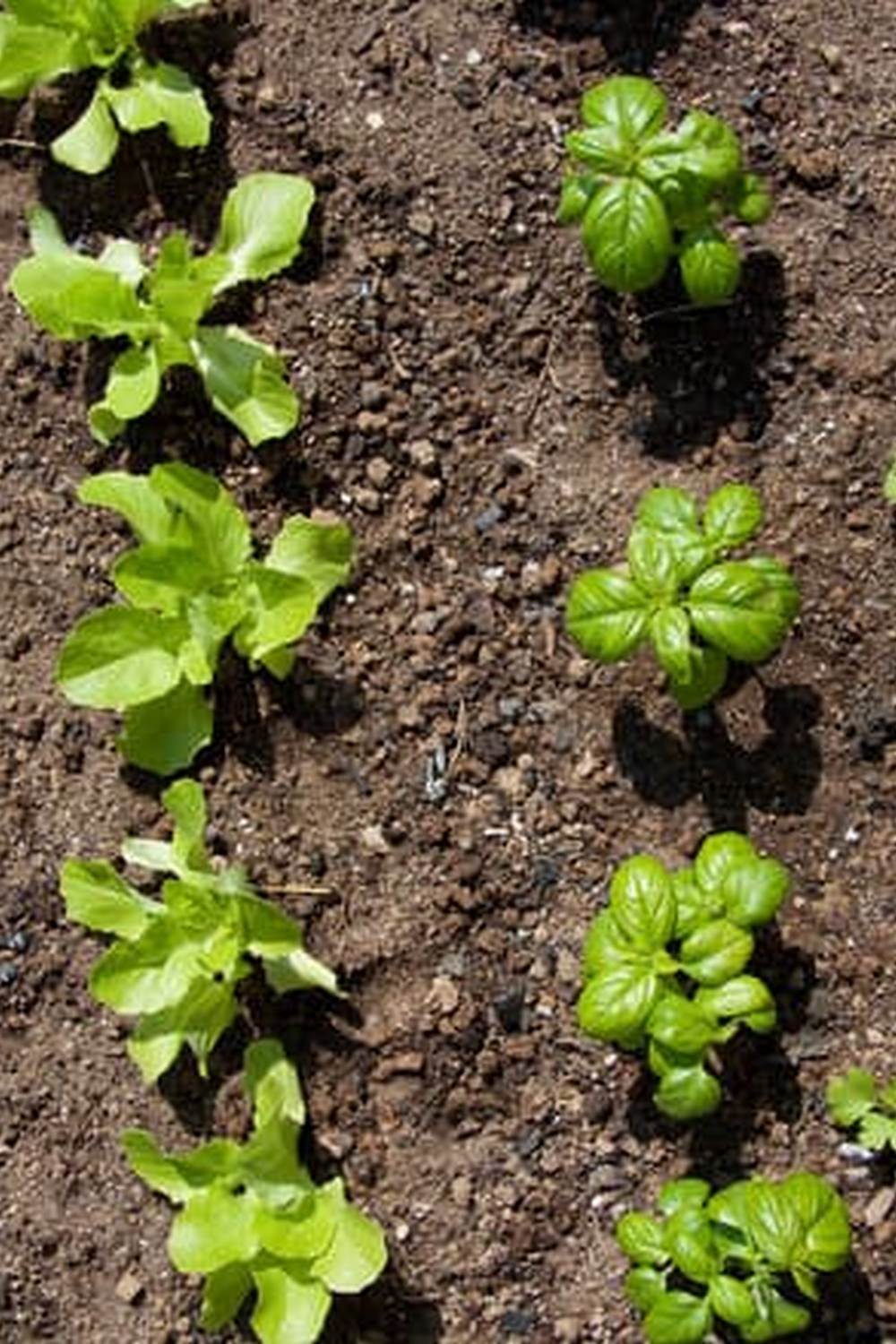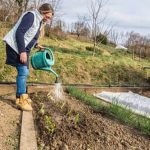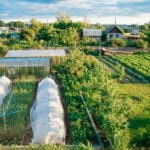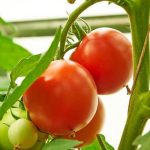Container gardening has become increasingly popular among gardening enthusiasts in Arizona, and for good reason. With its arid climate and intense heat, Arizona presents unique challenges for traditional vegetable gardening methods. However, by utilizing the strategy of container gardening, Arizonans can overcome these obstacles and successfully grow their own fresh produce.
In this article, we will explore the various aspects of container vegetable gardening in Arizona, from selecting the right containers to choosing heat-tolerant and drought-resistant vegetable varieties. We will also delve into essential tools and supplies needed for successful container gardening in this desert state. Additionally, we will discuss soil preparation techniques and water retention optimization methods that are crucial for container gardens in Arizona.
One of the main advantages of container gardening in Arizona is its versatility. Containers provide gardeners with greater control over important factors such as sun exposure, soil quality, and water usage. By utilizing different types of containers made from various materials specifically suited for the harsh Arizona climate, gardeners can create optimal growing conditions for their vegetables.
So whether you have limited space or are looking to optimize your vegetable yields in the challenging conditions of Arizona, container gardening offers a practical solution. In the following sections of this article, we will guide you through the process of creating a thriving container vegetable garden in Arizona – from selecting appropriate containers to harvesting your bountiful crops. Let’s dive in.
Selecting the Right Containers for Your Arizona Garden
When it comes to container gardening in Arizona, selecting the right containers is crucial for the success of your plants. Factors such as size, material, and drainage play a significant role in creating an optimal growing environment. Here are some key considerations to keep in mind when choosing containers for your Arizona garden:
- Size: The size of your containers is important as it determines the amount of soil volume available for plant roots to grow. Larger containers hold more soil, which helps retain moisture and provides better insulation for the roots from extreme temperatures. As a general rule of thumb, select containers that are at least 12-18 inches deep to accommodate most vegetable plants.
- Material: The material of the containers affects their durability, insulation properties, and aesthetics. Clay or terracotta pots are popular choices because they are porous and allow excess moisture to evaporate easily. However, they may dry out quickly in Arizona’s arid climate and can be prone to cracking due to temperature fluctuations. Alternatively, plastic containers are lightweight and retain moisture better but may not be as visually appealing.
- Drainage: Proper drainage is essential for container gardening success in Arizona. Without adequate drainage, excess water can accumulate at the bottom of the container and lead to root rot or fungal diseases. Ensure that your chosen containers have drainage holes at the bottom or consider adding them if necessary. Elevating containers using pot feet or placing them on a dish with pebbles can also prevent waterlogging.
Here is a handy list summarizing considerations when selecting containers for your Arizona garden:
– Choose larger containers (at least 12-18 inches deep) to provide ample space for plant roots.
– Consider clay or terracotta pots for their porosity but be aware that they may dry out quickly.
– Opt for plastic containers if you prefer lighter weight options that retain moisture better.
– Ensure proper drainage by selecting containers with pre-drilled holes or adding them yourself.
– Elevate containers or use pebbles to prevent waterlogging.
By carefully selecting the right containers for your Arizona garden, you will create a favorable environment for your vegetable plants to thrive and produce an abundant harvest.
Essential Tools and Supplies for Successful Container Vegetable Gardening in Arizona
When it comes to successful container vegetable gardening in Arizona, having the right tools and supplies is essential. The hot and dry climate of Arizona can present unique challenges, but with the proper equipment, you can ensure that your plants thrive.
One of the most important tools for container gardening in Arizona is a watering system. With the scorching desert heat, it can be difficult to keep up with the watering needs of your plants. Consider installing a drip irrigation system or using self-watering containers to ensure that your vegetables receive the consistent moisture they need to flourish.
In addition to a watering system, a good quality potting mix is crucial for container gardening success in Arizona. Look for a mix that is specifically formulated for container gardening and has excellent drainage properties. This will help prevent waterlogging and root rot during monsoon season or periods of heavy rainfall.
Another indispensable tool for successful container vegetable gardening in Arizona is shade cloth. While it may seem counterintuitive to provide shade in a desert climate, many vegetables actually benefit from some protection against the intense sun. Use shade cloth to cover your containers during the hottest part of the day to shield your plants from excessive heat and prevent sunburn damage.
Additionally, investing in high-quality hand tools such as trowels, pruners, and weeders will make gardening tasks much easier and more efficient. These tools are essential for planting seedlings, pruning back overgrown branches, and removing weeds that can compete with your vegetables for nutrients and water.
By having these essential tools and supplies on hand, you are setting yourself up for success in your container vegetable garden in Arizona. With proper irrigation, well-draining soil, shade protection when needed, and quality hand tools at your disposal, you will be able to overcome the challenges presented by the arid climate and enjoy bountiful harvests of fresh vegetables throughout the year.
Choosing the Best Vegetables for Container Gardening in Arizona
When it comes to container vegetable gardening in Arizona, selecting the right vegetables is crucial for success. The extreme heat and arid climate of Arizona make it necessary to choose plants that can thrive in these challenging conditions. Fortunately, there are many heat-tolerant and drought-resistant varieties available that are well-suited for container gardening in this region.
Tomatoes
Tomatoes are a popular choice for container gardening in Arizona due to their heat tolerance and versatility. Varieties such as ‘Heatmaster,’ ‘Super Sioux,’ and ‘Celebrity’ are known for their ability to withstand high temperatures without compromising fruit quality. These determinate types of tomatoes are also a great choice because they produce fruit within a shorter period, making them ideal for containers with limited space.
Peppers
Peppers, both sweet and hot varieties, also thrive in the Arizona climate. Look for heat-tolerant pepper varieties such as ‘Anaheim,’ ‘Jalapeno M,’ or ‘Cubanelle.’ These peppers can handle the intense summer temperatures without sacrificing flavor or yield. Additionally, peppers tend to have shallow root systems, making them well-suited for container gardening.
Cucumbers
Cucumbers are another excellent choice for container gardening in Arizona. They are not only drought-tolerant but also extremely productive when grown in containers. Consider varieties like ‘Lemon Cucumber’ or ‘Bush Pickle’ which are compact and work well in small spaces.
Herbs
Herbs such as basil, rosemary, thyme, and oregano thrive in the Arizona climate. They require minimal water once established and provide a variety of flavors to enhance your culinary adventures.
It’s important to do some research and select the right vegetable varieties that are known for their heat tolerance and drought resistance. By choosing these types of plants, you can ensure a bountiful harvest despite the challenging conditions in Arizona.
Preparing the Soil and Optimizing Water Retention in Containers for Arizona Container Vegetable Gardening
When it comes to container vegetable gardening in Arizona, preparing the soil and optimizing water retention are crucial steps for successful plant growth. Since containers have limited space for roots to grow and are exposed to hotter temperatures, it is important to provide the right conditions for your plants to thrive.
To prepare the soil in your containers, start by choosing a well-draining potting mix specifically designed for vegetables. Avoid using garden soil as it can become compacted and hinder water drainage. Additionally, adding organic matter such as compost or aged manure can improve soil structure and increase nutrient content.
Optimizing water retention is essential in the arid climate of Arizona. To reduce evaporation and preserve moisture, consider incorporating water-absorbing additives like vermiculite or perlite into your potting mix. These materials help retain moisture within the container while still providing proper drainage.
In addition to soil preparation, mulching can also be beneficial in conserving water. Apply a layer of organic mulch such as straw or wood chips around your container vegetables. This helps regulate soil temperature, prevent weed growth, and minimize evaporation.
To further enhance water retention, consider using self-watering containers or implementing a drip irrigation system. Self-watering containers feature a reservoir that holds excess water at the bottom, allowing plants to take up moisture as needed. Drip irrigation systems deliver water directly to the base of plants, reducing waste and promoting efficient watering.
By taking these steps to prepare the soil and optimize water retention in your containers, you are setting your Arizona container vegetable garden up for success. With proper moisture levels maintained, your plants will be able to withstand the heat and drought conditions commonly experienced in this region while producing healthy and bountiful harvests.
- Choose a well-draining potting mix specifically designed for vegetables.
- Add organic matter such as compost or aged manure to improve soil structure and nutrient content.
- Incorporate water-absorbing additives like vermiculite or perlite into potting mix to optimize water retention.
- Mulch around container vegetables with organic materials such as straw or wood chips to conserve moisture and regulate soil temperature.
- Consider using self-watering containers or drip irrigation systems for efficient watering and reduced water waste.
Sun and Shade
The success of your container vegetable garden in Arizona greatly depends on providing your plants with the right amount of sun exposure. Understanding the importance of proper sun exposure is essential for maximizing the growth and productivity of your vegetables.
Arizona is known for its hot and sunny climate, which can be both a blessing and a challenge for container gardening. While many vegetables thrive in full sun conditions, it’s important to find a balance between sunlight and shade to prevent your plants from getting scorched or wilting under the intense heat.
When choosing a location for your containers, look for an area that receives at least 6-8 hours of direct sunlight each day. This will provide your vegetables with the energy they need to grow and produce fruits. However, keep in mind that extreme heat can be damaging to some plants, especially during the peak summer months. Providing some shade during the hottest part of the day can help protect your plants from excessive heat stress.
There are a few strategies you can use to provide shade for your container garden. One option is to use shade cloth or bamboo blinds to create temporary shade structures that can be adjusted throughout the day. Another option is to strategically place your containers near natural shading elements such as trees or tall shrubs.
Optimizing Sun Exposure: Tips and Tricks
To optimize sunlight exposure for your Arizona container vegetable garden, here are some additional tips and tricks:
1. Rotate your containers: Throughout the day, the angle of the sun changes, so rotating your containers allows different sides of the plant to receive adequate sunlight.
2. Use reflective surfaces: Placing light-colored surfaces like aluminum foil or white stones around your containers can help reflect sunlight onto the leaves and increase overall light levels.
3. Provide afternoon shade: In areas with scorching afternoon sun, consider using umbrellas or creating temporary shade structures on particularly hot days.
4. Monitor soil temperature: Extremely high soil temperatures can damage roots and stunt plant growth. Evaluate the temperature of the soil by using a soil thermometer, and adjust shading or watering accordingly.
By understanding the importance of sun exposure and implementing these tips and tricks, you can ensure your Arizona container vegetable garden receives the right amount of light to thrive in the desert climate.
Maintenance and Care Tips for Thriving Container Vegetables in Arizona
In order to ensure that your container vegetables thrive in Arizona’s climate, it is essential to provide proper maintenance and care. This section will highlight some important tips for fertilization, pest control, and disease prevention in container gardening.
Fertilization plays a critical role in the growth and productivity of container vegetables. Since nutrients can be quickly washed away from containers due to frequent watering, it is necessary to regularly fertilize your plants. One way to provide the necessary nutrients is by using slow-release organic fertilizers specifically formulated for vegetables.
These fertilizers gradually release nutrients over time, providing a steady supply to your plants. Additionally, incorporating compost into the soil or using compost tea as a liquid fertilizer can further enhance the nutrient content and overall health of your container vegetables.
Pest control is another important aspect of maintaining thriving container vegetables. Arizona’s warm climate attracts various pests that can damage or even destroy your plants. To keep pests at bay, it is recommended to regularly inspect your plants for any signs of infestation such as holes in leaves or clusters of insects.
If you spot any pests, you can try removing them manually or using organic pest control solutions such as neem oil or insecticidal soap. It is also beneficial to practice companion planting by growing herbs or flowers that repel common pests alongside your vegetable plants.
Disease prevention is crucial for the longevity and productivity of your container vegetables. Proper sanitation practices are key in preventing diseases from spreading among plants. This includes sterilizing tools between uses and regularly cleaning containers to remove any potential sources of infection. Additionally, providing adequate air circulation around your plants can help prevent the development of fungal diseases. Avoid overcrowding your containers and trim any excess foliage to allow for better airflow.
By following these maintenance and care tips for fertilization, pest control, and disease prevention, you can ensure that your container vegetables remain healthy and productive throughout the growing season.
| Tip | Description |
|---|---|
| Fertilization | Regularly fertilize with slow-release organic fertilizers or compost to provide essential nutrients for your plants. |
| Pest Control | Inspect plants regularly for signs of infestation and use organic pest control methods such as neem oil or companion planting. |
| Disease Prevention | Maintain proper sanitation practices and ensure adequate air circulation to prevent the spread of diseases among your container vegetables. |
Harvesting and Enjoying the Fruits of Your Labor
When it comes to container vegetable gardening in Arizona, the ultimate reward for all your hard work is harvesting and enjoying the delicious fruits of your labor. To maximize both the yield and flavor of your homegrown vegetables, there are a few key tips to keep in mind.
Harvesting at the Right Time
One of the most important factors in maximizing yield and flavor is knowing when to harvest your vegetables. Each vegetable has its own optimal harvesting time, so it’s crucial to do some research or consult a gardening guide specific to your chosen crops.
Harvesting too early can result in underdeveloped flavor and texture, while waiting too long may cause vegetables to become overripe or tough. By harvesting at the right time, you can ensure the best taste and quality for your container-grown vegetables.
Proper Storage Techniques
After harvesting, it’s essential to handle and store your vegetables correctly to maintain their freshness and flavor. Some vegetables can be stored for longer periods, while others are best enjoyed immediately after harvest. Leafy greens like lettuce and spinach, for example, should be consumed as soon as possible for peak freshness.
On the other hand, root vegetables such as carrots and potatoes can be stored in a cool, dark place with proper ventilation to extend their shelf life. Understanding the storage requirements of each vegetable will help you make the most of your harvest.
Crop Rotation
To maximize both yield and flavor in container vegetable gardening in Arizona, implementing crop rotation is highly recommended. Crop rotation involves changing the planting location for different crops each year or season to prevent soil depletion and pest buildup.
By rotating where you plant your vegetables within your containers or garden space, you reduce the risk of diseases affecting subsequent crops while optimizing nutrient availability for each type of plant. This practice helps ensure that every harvest is as bountiful and flavorful as possible.
Enhancing Flavor with Companion Planting
Companion planting, the practice of planting compatible crops together, can also contribute to maximizing flavor in container vegetable gardening. Some combinations of vegetables and herbs have proven to enhance each other’s flavors when grown together in close proximity. For instance, tomatoes and basil are considered classic companions as the aroma of basil is said to improve the taste of tomatoes.
Similarly, onions and carrots can be planted together as they repel pests that can damage their respective roots. By strategically arranging your plants in containers based on their beneficial interactions, you can enhance the flavor of your harvest.
By following these tips for harvesting and enjoying the fruits of your labor in Arizona container vegetable gardening, you can make the most out of your homegrown bounty. From harvesting at the right time to storing properly and implementing crop rotation and companion planting techniques, you’ll be rewarded with delicious and flavorful vegetables that will make all your efforts worthwhile.
Success Stories
There are numerous success stories of individuals in Arizona who have found great joy and success in container vegetable gardening. One such example is the story of Mary Johnson, a resident of Phoenix, who transformed her small patio into a thriving vegetable garden using containers. Initially, she was hesitant about starting a garden due to limited space and the intense heat of Arizona’s climate. However, after extensive research and planning, Mary decided to give container gardening a try.
Mary started with selecting the right containers for her garden. She chose large plastic pots that were lightweight, durable, and had proper drainage holes. Since she had limited space, she opted for vertical gardening by using hanging baskets and wall-mounted planters as well. This allowed her to maximize her garden area while adding an aesthetic appeal to her patio.
After choosing the containers, Mary focused on selecting vegetables that are heat-tolerant and drought-resistant. Some of her successful choices included tomatoes, peppers, and herbs like basil and parsley. These varieties thrived in the Arizona climate while providing an abundance of fresh produce throughout the season.
To ensure optimal growth, Mary paid careful attention to soil preparation and water retention in her containers. She used a mixture of high-quality potting soil with added organic matter to improve fertility and moisture retention. Mary also incorporated mulch around the base of her plants to further reduce water evaporation and conserve moisture.
Maintenance was another crucial aspect of Mary’s success in container vegetable gardening. She regularly fertilized her plants with a balanced organic fertilizer to provide essential nutrients. Additionally, she implemented pest control measures like using natural insect repellents and practicing companion planting to deter pests naturally.
Mary’s hard work paid off when it came time for harvesting. She enjoyed bountiful yields of flavorful tomatoes and peppers from her container garden throughout the summer months. Not only did she have access to fresh produce right on her patio, but she also experienced the satisfaction of growing her own food in a challenging climate.
Mary’s success story is just one of many inspiring examples of container vegetable gardening in Arizona. With proper planning, the right containers, and careful attention to maintenance, anyone can achieve remarkable results. Whether you have a small balcony or a spacious patio, container gardening offers a convenient and productive way to grow your own vegetables in the Arizona climate.
Conclusion
In conclusion, container vegetable gardening in Arizona offers a multitude of benefits, making it an ideal option for gardening enthusiasts in the state. The arid climate and limited space can make traditional gardening challenging, but with the right containers, tools, and knowledge, anyone can create their own thriving vegetable garden.
One of the main advantages of container gardening in Arizona is its sustainability. By utilizing containers, you have more control over the soil quality and water usage. This means that you can optimize water retention in containers and prevent wastage, which is particularly important in a desert environment. Additionally, container gardening allows you to easily move your plants based on sun exposure needs or extreme weather conditions.
Not only does container vegetable gardening provide sustainability but also freshness and taste. Growing your own vegetables allows you to enjoy produce at its peak freshness and flavor. By choosing heat-tolerant and drought-resistant varieties, you ensure that your harvest will be flavorful even in the harshest Arizona summers.
Overall, Arizona container vegetable gardening empowers individuals to take control of their food supply while embracing sustainable practices. Whether you have limited space or simply enjoy the convenience of container gardening, this method allows for a productive and enjoyable experience. So why wait? Start your own Arizona container vegetable garden today and reap the benefits of fresh and delicious homegrown vegetables all year round.

If you’re looking to get into vegetable gardening, or are just looking for some tips on how to make your current garden better, then you’ve come to the right place! My name is Ethel and I have been gardening for years. In this blog, I’m going to share with you some of my best tips on how to create a successful vegetable garden.





